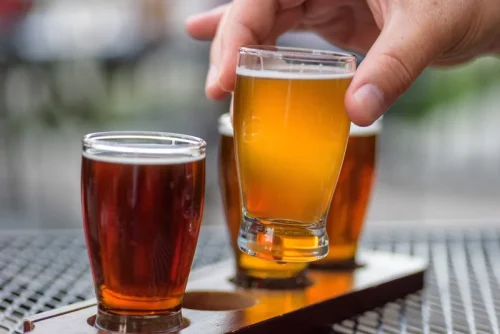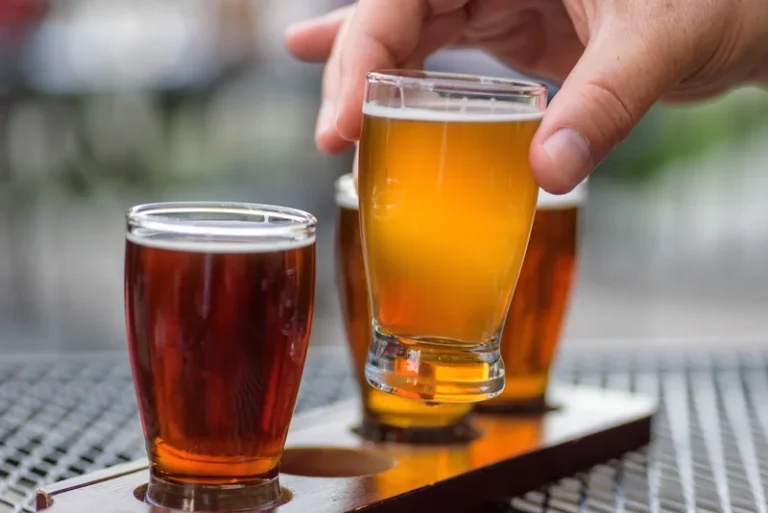
Because blackouts tend to occur at high BACs, they commonly stem from binge drinking, defined as a pattern of drinking that increases a person’s BAC to 0.08 percent or higher. This typically occurs after 4 drinks for women and 5 drinks for men—in about 2 hours. In fact, many people who have blackouts do so after engaging in a behavior known as high-intensity drinking, which is defined as drinking at levels that are at least twice as high as the binge-drinking thresholds for women and men.

Find Treatment Now
This could happen if someone drinks on an empty stomach or consumes large amounts of alcohol in a short amount of time. Because females, on average, weigh less than males and, pound for pound, have less water in their bodies, they tend to reach higher peak BAC levels than males with each drink and do so more quickly. This helps explain why being female appears to be a risk factor for having blackouts.
Healthy Living e-Newsletter
- While sober, members of the two groups performed comparably in memory tasks.
- Drinking can also increase the risks of a range of other diabetes-related health conditions, including serious cardiovascular and neurological issues.
- En bloc blackouts are stretches of time for which the person has no memory whatsoever.
- Contact the intake team at Archstone Behavioral Health to learn more about our programs.
For example, a 12-ounce beer may have as low as nine grams of carbs, while a five-ounce glass of wine has about four. Though there are carb-heavy drinks—dessert wines, for example—they do not necessarily make for a better drinking option. Different alcoholic drinks will have varying effects on your blood sugar It also depends how much you drink. A single alcoholic drink (a 330ml bottle of beer, medium glass diabetes and alcohol blackouts of wine) may not have a huge effect on your overall blood sugar. In addition to abstaining from alcohol, moderation and pace are important to preventing blackouts.
Discover more about Type 2 Diabetes

Consequently,the reliability or accuracy of memories that are recalled following a period ofalcohol-induced amnesia are likely to be suspect. Fifteenstudies examined prevalence and/or predictors of alcohol-induced blackouts.Six publications described consequences of alcohol-induced blackouts, andfive studies explored potential cognitive and neurobiological mechanismsunderlying alcohol-induced blackouts. Questions about blackouts during routine medical visits could serve as an important simple screen for the risk of alcohol-related harms.
Symptoms of alcohol intoxication
This triggers the hunger reflex to set in, causing the patient to eat (polyphagia), increasing BGL even more. In contrast, T2DM (non-insulin dependent diabetes) continue to produce insulin in the early phase of the disease; however, the body resists insulin’s effect. A deficit in insulin secretion, coupled with the state of insulin resistance, leads to T2DM 20.
Differentiating the patient with “intoxicated” symptoms
- Most importantly, blood glucose is taken up into the muscle and fat tissues, by insulin, and existing glucose is converted into a storage form (i.e., glycogen), thereby lowering the blood glucose levels (e.g., after a meal).
- If you do drink these with alcohol, your blood sugar may spike and then dip to dangerously low levels.
- If your diabetes is already well under control, a moderate amount of alcohol may be fine either before, during or soon after a meal.
- Goodwin and colleagues (1970) examined the impact of acute alcohol exposure on memory formation in a laboratory setting.
- He survived but showed memory impairments similar to those exhibited by H.M.
During the 2 weeks preceding the survey, an equal percentage of males and females experienced blackouts, despite the fact that males drank significantly more often and more heavily than females. This outcome suggests that at any given level of alcohol consumption, females—a group infrequently studied in the literature on blackouts—are at greater risk than males for experiencing blackouts. The greater tendency of females to black out likely arises, in part, from well-known gender differences in physiological factors that affect alcohol distribution and metabolism, such as body weight, proportion of body fat, and levels of key enzymes. There also is some evidence that females are more susceptible than males to milder forms of alcohol-induced memory impairments, even when given comparable doses of alcohol (Mumenthaler et al. 1999).

Diabetes and alcohol abuse (such as binge drinking) can have long-lasting effects in some cases. For reference, the Centers for Disease Control and Prevention (CDC) defines moderate drinking as two drinks or fewer per day for men, or one drink or fewer per day for women. T1DM (insulin-dependent diabetes) results due to autoimmune progressive destruction of insulin-secreting β-cells of the pancreas by CD4+ and CD8+ T cells and macrophage infiltrating the islets 19. The hormone insulin, secreted by the pancreas, involved in regulating body’s blood glucose levels and other metabolic function. Most importantly, blood glucose is taken up into the muscle and fat tissues, by insulin, and existing glucose is converted into a storage form (i.e., glycogen), thereby lowering the blood glucose levels (e.g., after a meal).
Alterations of Lipid Metabolism
Most subjects met diagnostic criteria for alcoholism and half had a history of frequent blackouts. The men were asked to consume roughly 16 to 18 ounces of 86-proof bourbon in approximately 4 hours. Beginning 1 hour after subjects began drinking, memory was tested by presenting subjects with several different stimuli, including a series of children’s toys and scenes from erotic films. Subjects were asked to recall details regarding these stimuli 2 minutes, 30 minutes, and 24 hours after the stimuli were shown. Half of the subjects reported no recall for the stimuli or their presentation 30 minutes and 24 hours after the events, though most seemed to recall the stimuli 2 minutes after presentation.

Alcohol, Memory, and the Hippocampus
Given thepotential impact of these findings on prevention and intervention programs,additional research examining genetic and environmental factors contributingto alcohol-induced blackouts is needed. A daily cocktail or two may improve blood glucose (blood sugar) management and insulin sensitivity. If you have one or more https://ecosoberhouse.com/ drinks a day, you may find that your A1C is lower than during times you weren’t drinking. After all, other aspects of moderate drinkers’ lives may be behind the link.
